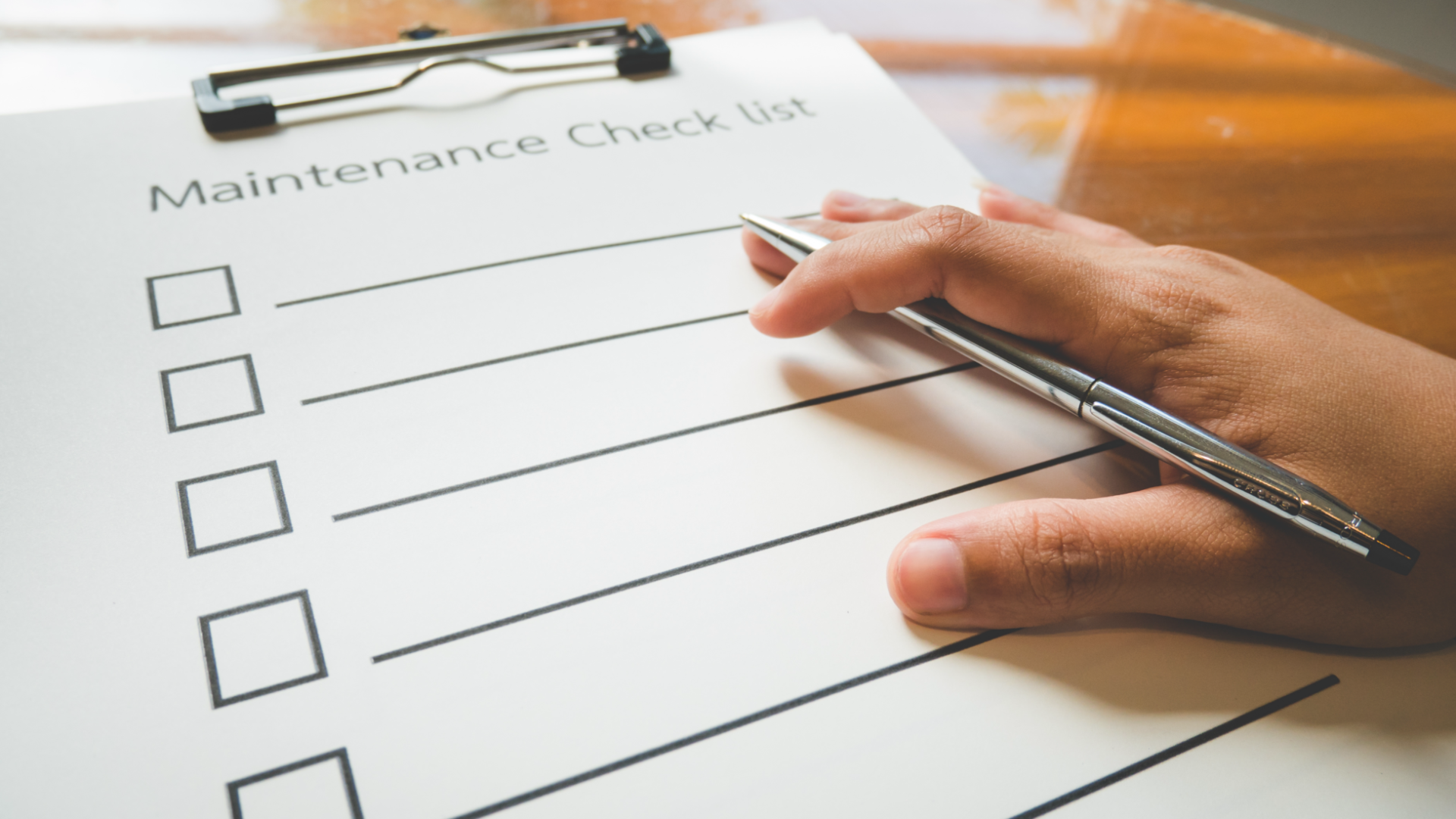A property maintenance checklist can be a list of responsibilities an internal maintenance team must complete on a regular basis to keep a facility, machine, or system in good working order. It usually includes inspection, cleaning, lubrication, and repair tasks. A maintenance checklist can help reduce employee downtime and emergency repairs while improving the equipment’s longevity.
When it comes to property management, maintenance checklists can help your maintenance techs organize and prioritize their tasks. With these checklists, you will have a better understanding of what your team is getting done, more oversight into the maintenance process, and can ensure that nothing falls through the cracks.
Why are maintenance checklists important?
Maintenance checklists are essential because they help ensure that a machine, piece of equipment, or facility is operating safely and efficiently. They provide a comprehensive list of tasks to complete regularly to ensure that the equipment is in good working order and is not a safety hazard. Having a list of regular maintenance requirements can help identify potential problems that technicians must address before they become dangerous or costly.
Creating a standard maintenance checklist is fundamental to having a well-managed property maintenance team and satisfied residents. Below are some of the key benefits of performing regular maintenance checks:
1. Increases the average life-expectancy of equipment: ensure operating equipment is always available and in good working condition for the long term.
2. Ensures safety: unexpected hazards can be avoided, such as machine failure and breakdowns, which can cause accidents and injuries to surrounding people if left unchecked.
3. Improves efficiency: Maintenance technicians can work more productively with designated tasks to complete each day. Operational downtime is reduced, saving both time and money, and allowing you to do more work with a smaller team.
4. Provides good recordkeeping: You can identify trends in your maintenance process by tracking the work your team does each day. It is always a good idea to keep thorough records in the event of potential disputes over maintenance work.
5. Improving resident satisfaction: routinely checking equipment will reduce the number of equipment failures. The better condition your properties are in, the happier your residents will be.
6. Reduce maintenance costs: a maintenance checklist reduces maintenance costs in various ways. First, by decreasing employee downtime, you are increasing the productivity and efficiency of your team. Meaning you aren’t paying your employees for their downtime. Secondly, by routinely inspecting equipment, you significantly reduce the number of costly emergency repairs that may pop up.
How do I start a maintenance checklist?
1. Make a list of all the equipment and assets you want to include in your maintenance checklist.
2. Determine the maintenance tasks that need to be performed on each item.
3. Write down a schedule for when each task needs to be done, including frequency and duration.
4. Make sure to include any special instructions for each job.
5. Create a checklist to document when each task is finished.
6. Make sure to keep the list up to date with any changes.
7. Include a task for following up with residents to ensure the maintenance team completes work to their satisfaction.
8. Consider finding a dedicated maintenance software to help you track maintenance requests and implement preventative maintenance practices
Want to simplify this process? Request a demo and see how Property Meld streamlines maintenance workflows, from checklists to task management.
What should be on a maintenance checklist?
1. Exterior: Check the property’s exterior for any signs of damage or wear and tear, such as cracks in the walls, broken windows, or damaged gutters.
2. Interior: Inspect the property’s interior for any signs of damage, such as water damage, mold, or mildew. Also, check for any electrical or plumbing problems.
3. Heating & Cooling: Check the heating and cooling system for any signs of damage or wear and tear.
4. Appliances: Inspect all appliances for any signs of damage or wear and tear. Also, check for any leaks or blockages in the pipes.
5. Pest Control: Inspect the property for any signs of pests, such as mice, rats, ants, or roaches.
6. Safety: Check the property’s safety features such as smoke detectors, fire extinguishers, and carbon monoxide detectors.
7. Follow up: Follow up on any maintenance tasks completed to ensure residents are satisfied with the work. Asking residents for feedback is a great way to share positive feedback about your process or identify areas that need to be improved.
If you need help more insight into the property maintenance process check out our ultimate guide to property maintenance, or schedule a demo to see how Property Meld can help.
Our software is a maintenance checklist on steroids, providing complete oversight and transparency of the entire maintenance process.
Request a Demo






